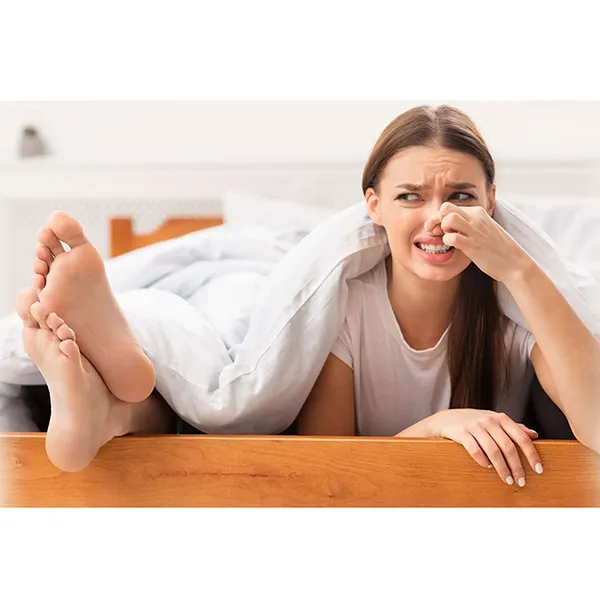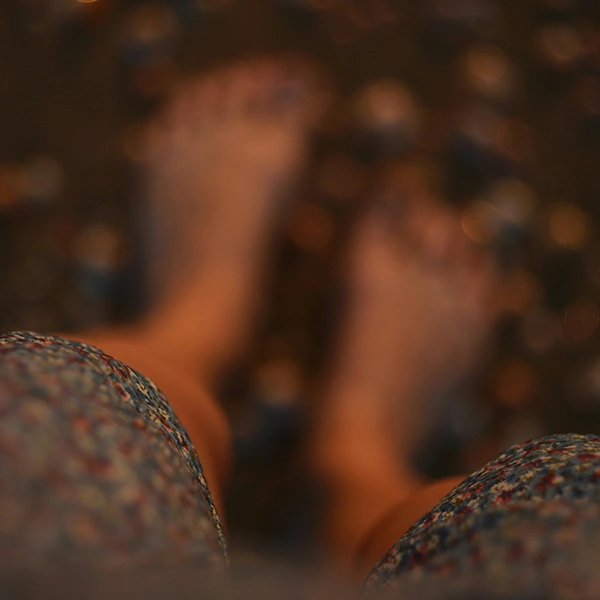Say Goodbye to Smelly Feet in Australia | Top Remedies & Prevention Tips
Effective management of smelly feet begins with understanding the underlying role of sweat glands and the activity of bacteria and fungi on the skin surface. When overactive sweat glands combine with warm, moist conditions—common in parts of Australia—microbial growth accelerates, producing the characteristic odour that defines smelly feet. Implementing a comprehensive foot hygiene regimen disrupts this process at multiple stages, from regular cleansing to targeted use of antifungal treatments and natural remedies.
To explore how to get rid of smelly feet, start by adopting a daily routine that incorporates mechanical exfoliation and pH-balanced cleansers designed to inhibit bacterial proliferation. Foot soaks with diluted antiseptics reduce microbial load, while natural remedies for smelly feet such as tea tree oil leverage intrinsic antimicrobial properties. For persistent cases, medical-grade foot odour treatment products—including aluminium chloride–based formulas—provide extended control by blocking sweat gland ducts and creating an inhospitable environment for odour-causing organisms.
Selecting the best foot deodorant for smelly feet involves evaluating active ingredients against your skin type; look for formulations that offer both odour neutralisation and moisture control. Complement product application with breathable footwear, moisture-wicking socks, and strategic rotation of shoes to allow thorough drying.
Underpinning all interventions is a solid foundation of foot hygiene tips: trim nails regularly, change socks twice daily, and air feet after showering to prevent re-maceration. Understanding how to prevent foot odour also means addressing causes of smelly feet and how to fix it—from hyperhidrosis to dermatophyte infections.
Whether you’re exploring foot care for stinky feet at home or consulting a podiatrist about prescription-strength foot odour treatment products, the right combination of preventive measures, in-clinic antifungal treatments, and over-the-counter solutions will ensure lasting freshness.
How to Get Rid of Smelly Feet

Effectively conquering smelly feet in Australia begins with a systematic approach to cleansing and moisture control. First, gently scrub your feet daily with a pH-balanced antibacterial cleanser to remove sweat, dead skin cells, and excess oil that fuel bacterial growth. After washing, thoroughly dry between toes and across the soles, since trapped moisture encourages odour-causing bacteria and fungi to thrive. Incorporate a weekly exfoliation—using a pumice stone or foot scrub—to slough off hardened skin where microbes can hide and multiply.
Selecting the right footwear and socks is equally crucial. Rotate shoes so each pair has at least 24 hours to air out, and choose moisture-wicking, breathable socks made from merino wool or technical synthetics rather than cotton. Foot powders or sprays containing aluminium chloride can be applied to clean, dry feet each morning to inhibit sweat gland activity and neutralise odours throughout the day.
For those seeking natural remedies for smelly feet, consider tea tree oil foot baths twice weekly: dilute a few drops in warm water to leverage its antifungal and antibacterial properties while soothing inflammation. Vinegar soaks (one part vinegar to two parts water) help restore acidic pH, discouraging microbial growth. With consistent hygiene, targeted products, and mindful footwear choices, you can significantly reduce—and often eliminate—foot odour for good.
Steps to Eliminate Foot Odor Permanently
- Daily Washing and Drying
Wash feet every morning and evening with an antibacterial, pH-balanced soap. After rinsing, pat thoroughly dry—especially between toes—to prevent moisture buildup that fosters microbial proliferation.
- Regular Exfoliation
Once or twice weekly, use a pumice stone or chemical foot peel to remove dead skin. Exfoliation disrupts the environment where bacteria and fungi flourish.
- Targeted Treatments
- Foot Odour Treatment Products: Apply an aluminium chloride–based spray or powder each morning to block sweat glands and neutralise odour.
- Antifungal Treatments: If fungal infections (e.g., athlete’s foot) contribute to odour, use over-the-counter antifungal creams or consult a pharmacist for prescription options.
- Foot Odour Treatment Products: Apply an aluminium chloride–based spray or powder each morning to block sweat glands and neutralise odour.
- Footwear Rotation and Care
Wear different pairs of shoes on alternating days. Allow each pair to air out completely, and consider sprinkling foot powder inside to absorb moisture and odours.
- Natural Maintenance
Weekly foot soaks with tea tree oil or vinegar help maintain an inhospitable pH for microbes. Follow up with a natural deodorising powder or cream.
- Lifestyle Adjustments
Stay hydrated, limit high-sugar and processed foods that can exacerbate sweating, and manage stress, as anxiety can increase perspiration.
When Should You See a Specialist for Smelly Feet?
While most cases of foot odour respond to diligent home care, consult a podiatrist or dermatologist if you experience any of the following:
- Persistent or Severe Odour despite consistent hygiene and over-the-counter treatments.
- Signs of Infection, such as redness, swelling, itching, peeling skin, or painful blisters—indicating a possible fungal or bacterial infection requiring professional intervention.
- Excessive Sweating (Hyperhidrosis) that impacts daily life and resists topical treatments; prescription antiperspirants or procedures like iontophoresis may be advised.
- Underlying Health Concerns, including diabetes or peripheral vascular disease, where foot health is especially critical and odour may signal complications.
A specialist will assess for infections, prescribe appropriate antifungal treatments, and recommend advanced solutions—such as medical-grade orthotics or custom antimicrobial insoles—to restore foot health and confidence.
Best Foot Deodorant for Smelly Feet

Choosing the best foot deodorant for smelly feet combines understanding active ingredients, formulation types, and local availability. In Australia’s diverse climates—from humid tropics to temperate south—foot deodorants must control moisture, neutralize odour, and maintain skin health. Effective products often feature antifungal treatments such as zinc oxide or tea tree oil, and sweat-regulating agents like aluminium chloride. Look for foot odour treatment products with dual-action formulas that both inhibit sweat gland activity and create an inhospitable pH for bacteria and fungi. By prioritizing proven actives and testing small amounts for skin tolerance, you can find a foot deodorant that keeps your feet fresh all day, every day.
Top Foot Deodorants Available in Australia
- Dermal Therapy Antifungal Foot Spray
Contains zinc pyrithione and tea tree oil to combat fungal growth and odour. Its spray format ensures even coverage in hard-to-reach areas.
- Scholl Fresh Step Foot Powder
Utilises aluminium chloride hexahydrate to reduce perspiration and cornstarch to absorb excess moisture, keeping shoes and socks dry.
- Friday Foot Relief Cream
Blends peppermint oil, tea tree oil, and eucalyptus oil for natural antimicrobial action and a cooling sensation—ideal for post-workout freshness.
- The Footlogix Odour Stopper
Features a patented antimicrobial complex that targets odour-causing microbes while providing hydration to prevent cracking.
Each of these foot odor remedies is formulated to address both sweat and microbial contributors to smelly feet, making them top choices for foot care in Australia.
How to Choose the Right Foot Deodorant for Your Skin
Selecting a deodorant that suits your skin type and lifestyle is vital:
- For Sensitive Skin: Opt for fragrance-free, hypoallergenic formulas with minimal irritants. Ingredients like zinc oxide or aloe vera soothe inflammation while controlling odor.
- For Oily or Sweaty Feet: Prioritize aluminium chloride-based sprays or powders that effectively block sweat ducts. Look for fast-drying applications to minimize residue.
- For Dry or Cracked Skin: Choose creams with added emollients—such as shea butter or glycerin—alongside antifungal agents to soften and heal while preventing odour.
- For Active Lifestyles: Sprays and roll-ons offer quick absorption post-shower or workout. Ensure compatibility with sports socks and enclosed footwear to prevent product buildup.
By matching formulation type (cream, spray, powder) and active ingredients to your specific needs, you’ll gain maximum odour control without compromising skin health.
Application Tips for Effective Foot Deodorants
- Apply to Clean, Dry Feet: Always use deodorant after washing and thoroughly drying—to ensure active ingredients penetrate skin rather than water residue.
- Target High-Sweat Areas: Focus on soles, between toes, and around the heel where sweat glands are densest.
- Allow Full Absorption: Wait 2–3 minutes before donning socks or footwear to prevent rubbing off product.
- Reapply as Needed: In high-humidity conditions or after intense activity, a midday touch-up can maintain protection.
- Rotate Products Seasonally: Heavier cream formulas in cooler months and lightweight sprays or powders during hot, humid periods keep feet balanced.
Foot Odor Remedies
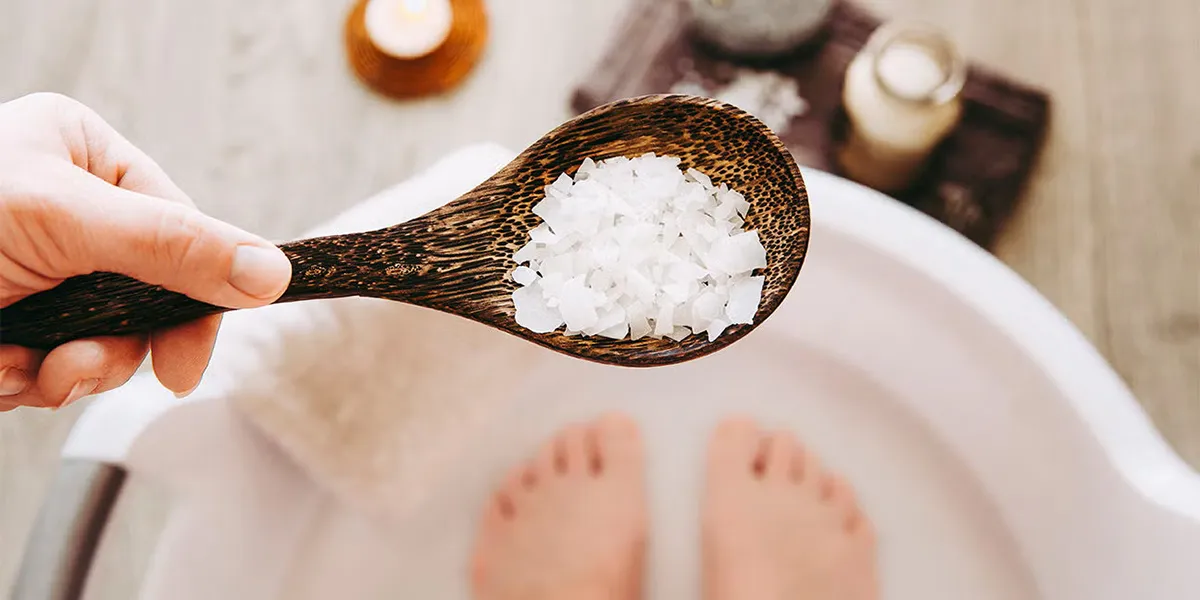
Effective foot odor remedies tackle both sweat production and microbial growth to combat smelly feet at the source. Begin with natural remedies like foot soaks using tea tree oil or diluted vinegar to restore acidic pH and disrupt bacteria and fungi colonies; these natural remedies for smelly feet provide non-irritating, cost-effective maintenance when used weekly. Complement home treatments with targeted foot odour treatment products—powders or sprays containing aluminium chloride or activated charcoal—to absorb excess moisture and neutralise odours.
In addition to topical solutions, managing perspiration through breathable footwear and moisture-wicking socks reduces the environment in which microbes thrive. For persistent cases, professional antifungal interventions—such as medicated creams containing clotrimazole or terbinafine—can eradicate underlying fungal infections that exacerbate odour. By combining mechanical, chemical, and natural approaches, these foot odor remedies ensure both immediate relief and long-term prevention of smelly feet.
Natural Remedies for Foot Odor
Harnessing natural remedies for smelly feet can be a gentle yet powerful strategy for controlling odour without harsh chemicals. Coconut oil, rich in lauric acid, offers antibacterial action against bacteria and fungi, while baking soda absorbs moisture and balances pH when sprinkled inside shoes or added to foot soaks. Regular foot baths with Epsom salts draw out toxins, soothe inflammation, and discourage microbial overgrowth.
Herbal infusions—such as chamomile or rosemary—can be steeped and used as a warm foot soak to relax skin and exert mild antiseptic effects. Consistent use of these foot odor remedies at least twice weekly supports healthy sweat gland function and prevents odour recurrence. For best results, dry feet thoroughly after each natural treatment and follow up with a lightweight, non-comedogenic foot powder or cream to maintain freshness.
The Role of Antifungal Treatments in Foot Odor
When fungal infections contribute to smelly feet, targeted antifungal treatments become essential foot odor remedies. Dermatophytes such as Trichophyton species colonise damp areas between toes, producing odour-causing byproducts. Over-the-counter antifungal treatments—creams, sprays, or powders containing miconazole or tolnaftate—penetrate skin layers to inhibit fungal growth and eliminate odour at its root.
For severe or recurrent cases, a podiatrist may prescribe oral antifungal medications or recommend medicated foot soaks with diluted potassium permanganate. These professional antifungal treatments not only resolve infections but also restore healthy skin barriers, reducing sweat gland hyperactivity and discouraging bacteria and fungi from re-establishing. Integrating antifungal protocols with daily foot hygiene practices ensures lasting relief from smelly feet and supports overall foot health.
Foot Hygiene Tips
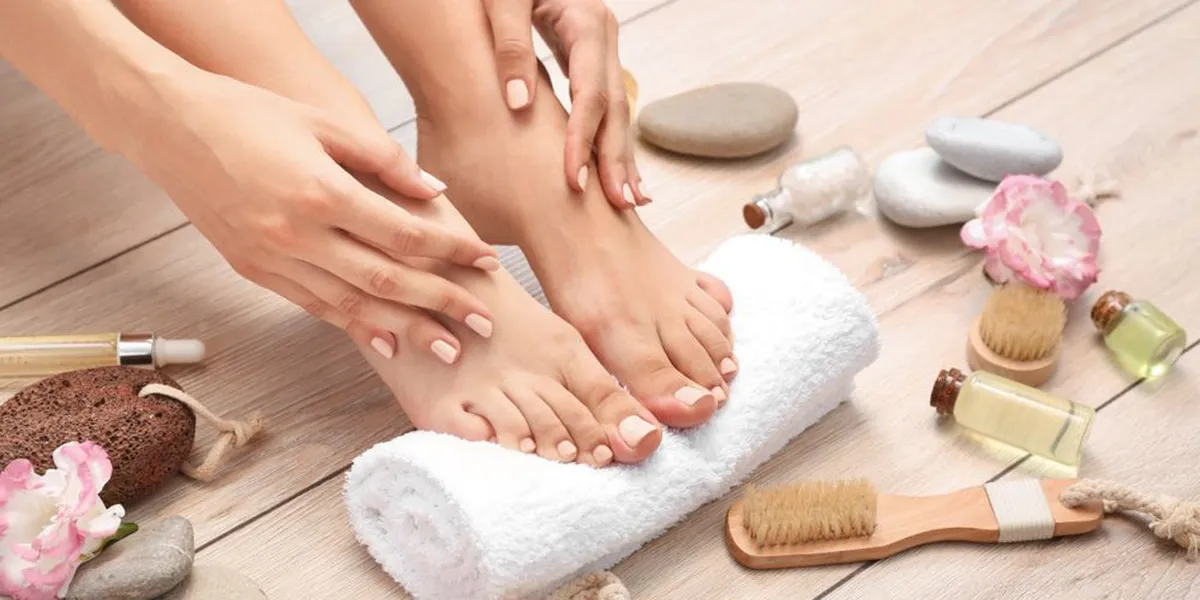
Maintaining rigorous foot hygiene is the cornerstone of preventing smelly feet in Australia’s varied climates. Clean feet inhibit overactive sweat glands and deprive bacteria and fungi of the moist environment they need to thrive. Begin by washing feet daily—morning and night—with a gentle, pH-balanced cleanser designed to remove sweat, dirt, and oil without stripping natural oils. Follow with a light exfoliation once or twice a week to remove dead skin cells where microbes can accumulate. Incorporate natural remedies like tea tree oil or coconut oil into your routine to leverage their antimicrobial properties, reducing reliance on harsh antifungal treatments.
Equally important is proper sock and footwear selection: choose moisture-wicking socks made of merino wool or technical blends, and alternate between at least two pairs of shoes daily. Allow each pair to air out completely, and sprinkle a thin layer of foot powder or a trusted foot odour treatment product inside to absorb residual moisture. Consistent adherence to these foot hygiene tips creates an inhospitable environment for odour-causing organisms, ensuring lasting freshness and comfort.
Daily Foot Care Routine to Prevent Smelly Feet
An effective daily foot care routine forms the first line of defence against smelly feet. Start by soaking feet in warm water mixed with a teaspoon of baking soda to balance pH and soften skin. After a five-minute soak, gently scrub with a soft brush or pumice to remove calluses and hidden debris. Rinse thoroughly and pat feet completely dry, paying special attention to spaces between toes—this is where bacteria and fungi most frequently proliferate.
Next, apply a light layer of a fast-absorbing foot odour treatment product—such as a powder or spray with aluminium chloride—to control perspiration. Finish with a brief massage using a natural foot cream containing tea tree or peppermint oil to nourish skin and provide antimicrobial benefits. By dedicating just ten minutes each morning and evening to this routine, you dramatically reduce the risk of odour development and maintain healthy, fresh feet.
Importance of Drying Your Feet After Showers
Properly drying your feet after showers is critical for combating foot odour and preventing persistent smelly feet. Even slight moisture trapped beneath skin folds creates ideal conditions for sweat glands to secrete sweat and for bacteria and fungi to flourish. After every wash, use a soft, absorbent towel to meticulously pat each toe, arch, and heel until completely dry. For individuals prone to excessive sweating, consider following with a quick blast from a cool hairdryer set on low heat—this further eliminates hidden dampness.
In professional or athletic settings, carry a compact microfiber towel to re-dry feet after midday workouts or long shifts. This simple step interrupts the moisture cycle, reducing the need for more aggressive antifungal treatments or heavier foot odour treatment products. A fully dry foot environment is one of the most effective foot hygiene tips for long-term control of odour and skin health.
Best Practices for Foot Hygiene and Prevention
Adopting these best practices for foot hygiene and prevention ensures you stay ahead of smelly feet all year round:
- Rotate Footwear Regularly: Never wear the same shoes two days in a row; allow 24–48 hours for drying.
- Change Socks Twice Daily: Swap out socks after morning and afternoon activities to keep feet dry.
- Trim Nails Properly: Keep toenails short and clean to prevent debris accumulation.
- Use Breathable Materials: Select shoes with moisture-wicking linings and natural materials like leather or mesh.
- Incorporate Natural Remedies: Monthly foot soaks with apple cider vinegar or Epsom salts support microbial balance.
By consistently following these guidelines—rooted in comprehensive foot hygiene tips and supported by both natural remedies and targeted foot odour treatment products—you can effectively prevent and manage foot odour in any Australian setting.
How to Prevent Foot Odour

Preventing foot odour is all about cutting off factors that encourage odour-causing bacteria and fungi from thriving. Start by managing sweat at its source: apply an aluminium chloride–based foot odour treatment product before bed, when skin is driest, to reduce overnight perspiration from sweat glands. During the day, use moisture-wicking socks and rotate footwear daily to avoid trapping humidity. Incorporate natural remedies for smelly feet—such as sprinkling baking soda inside shoes—to absorb residual moisture and neutralise pH.
Maintaining overall hygiene also supports prevention. Keep toenails trimmed to prevent debris build-up and wash socks in hot water with an antibacterial detergent. For individuals prone to hyperhidrosis, consider clinical interventions like prescription-strength antiperspirant sprays or iontophoresis treatments under professional guidance. By integrating these strategies into your routine, you’ll create an environment hostile to microbes and maintain fresh, healthy feet.
Prevention Strategies for Healthy Feet
- Nighttime Antiperspirant Application
Apply a thin layer of aluminium chloride spray or cream to clean, dry feet before sleep. This blocks sweat ducts and allows long-lasting reduction in perspiration.
- Regular Shoe Rotation
Never wear the same pair two days in a row. Allow shoes to air out fully between wears; sprinkle with foot powder to absorb moisture.
- Sock Management
Opt for socks made of merino wool or technical blends that wick moisture away. Change socks mid-day if feet feel damp.
- Home Foot Soaks
Weekly soaks with apple cider vinegar or Epsom salts help maintain acidic pH and soothe skin, reducing microbial growth.
- Footwear Choices
Select shoes with breathable materials—mesh, leather, or canvas—and avoid fully synthetic linings that trap moisture.
Choosing the Right Footwear to Avoid Odor
The foundation of foot care for stinky feet is proper footwear selection. Breathable construction and moisture-wicking linings are paramount. Look for:
- Ventilated Designs: Shoes with mesh panels or perforations increase airflow.
- Natural Materials: Leather and canvas allow feet to breathe more effectively than plastic or rubber.
- Removable Insoles: Replaceable insoles can be washed or swapped out regularly to prevent odour buildup.
- Proper Fit: A snug but non-constricting fit minimises friction and hotspots, reducing sweat pooling.
- Moisture-Wicking Liners: Some brands offer antimicrobial, moisture-wicking liners that inhibit bacteria and fungi.
By strategically selecting and caring for your footwear, you cut off one of the primary breeding grounds for odour-causing microbes. Combine these choices with diligent foot hygiene tips and you’ll effectively prevent foot odour in any Australian environment.
Foot Care for Stinky Feet
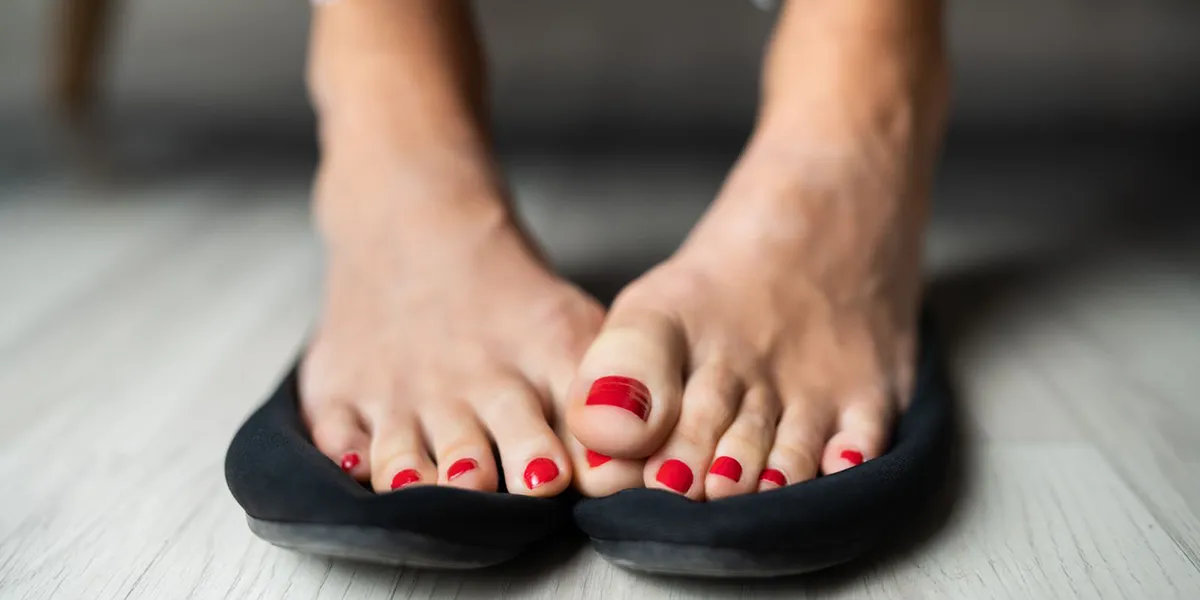
Comprehensive foot care for stinky feet hinges on consistent daily maintenance, targeted treatments, and professional guidance when necessary. Start by inspecting your feet regularly—look for signs of redness, scaling, or infection between toes, which can exacerbate smelly feet. Incorporate foot hygiene tips such as gentle cleansing, thorough drying, and weekly exfoliation to remove debris that harbours bacteria and fungi. Use natural remedies like tea tree oil or baking soda soaks to maintain an unfavourable pH for microbes.
Topical foot odour treatment products—including powders, sprays, and creams—should be applied to clean, dry feet and inside shoes to absorb moisture and neutralise odour. For deeper hydration and repair, choose emollient-rich creams with antifungal actives for cracked or callused skin. Rotate footwear and socks daily to allow airing out, and consider moisture-wicking insoles or antimicrobial linings to minimise microbial regrowth.
How to Manage Foot Odor with Proper Foot Care
- Inspect and Clean
Examine feet daily, paying special attention to between toes. Wash with an antibacterial, pH-balanced soap and dry completely.
- Exfoliate and Moisturise
Use a pumice stone or gentle scrub once a week to remove calluses. Follow with a light foot cream containing antifungal ingredients to repair skin and deter bacteria and fungi.
- Targeted Treatments
Apply a sweat-blocking foot odour treatment product (e.g., aluminium chloride spray) at night and a deodorising powder in the morning.
- Footwear Management
Alternate shoes daily. Use breathable materials and sprinkle antifungal foot powder inside between wears.
- Preventive Soaks
Weekly soaks in warm water with apple cider vinegar or Epsom salts help maintain skin integrity and microbial balance.
Podiatrist Recommendations for Foot Odor Problems
When home care falls short, a podiatrist can offer advanced solutions tailored to your condition:
- Professional Debridement: Removal of thickened calluses that trap moisture and microbes, reducing odour hotspots.
- Prescription Topicals: Stronger antifungal or antibacterial creams (e.g., terbinafine, ciclopirox) for resistant infections.
- Custom Orthotics: Insoles designed to optimise airflow and reduce friction, minimising sweat accumulation.
- Iontophoresis Therapy: In-office treatment that uses mild electrical currents to reduce sweat gland activity for hyperhidrosis.
- Lifestyle Counseling: Guidance on diet, hydration, and stress management to indirectly control perspiration levels.
By combining diligent at-home foot care for stinky feet with professional podiatric treatments, you can effectively neutralise odour and maintain optimal foot health.
Natural Remedies for Smelly Feet
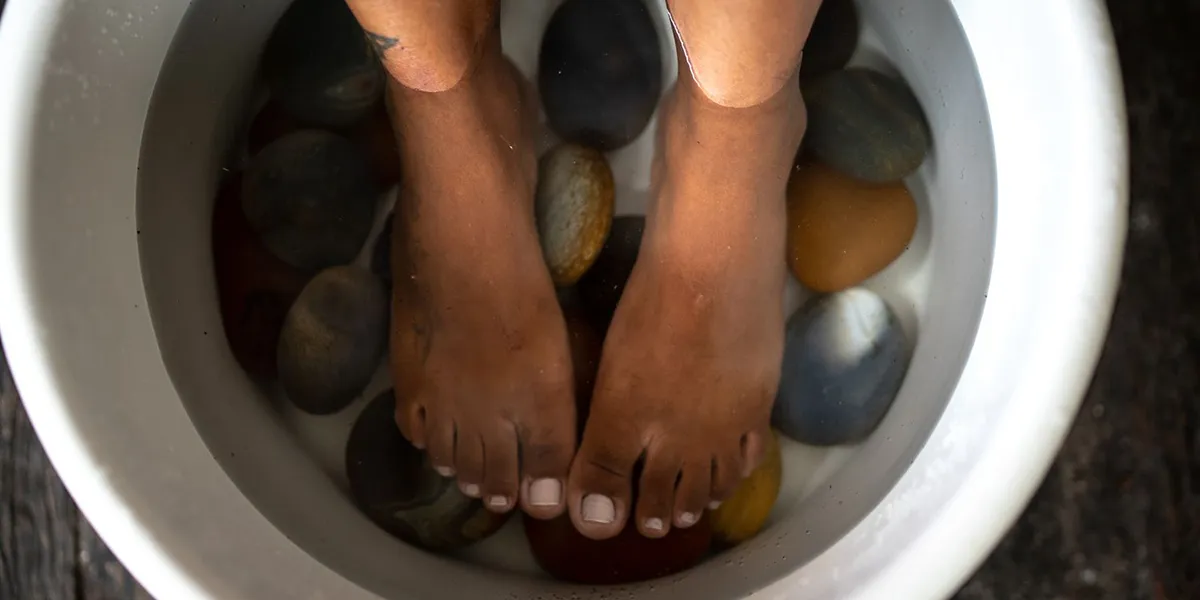
Harnessing natural remedies for smelly feet offers a gentle yet effective approach to managing foot odor without harsh chemicals. Essential oils and common household ingredients work synergistically to balance pH, reduce microbial load, and soothe irritated skin.
Using Essential Oils to Combat Foot Odor
Essential oils possess potent antimicrobial properties that target bacteria and fungi on the skin’s surface. To create an oil-based foot soak:
- Select Your Oil
- Tea Tree Oil: Rich in terpinen-4-ol, it inhibits fungal and bacterial growth.
- Lavender Oil: Offers mild antiseptic benefits and a soothing scent.
- Eucalyptus Oil: Contains cineole, which reduces inflammation and combats microbes.
- Tea Tree Oil: Rich in terpinen-4-ol, it inhibits fungal and bacterial growth.
- Prepare the Soak
- Fill a basin with warm water.
- Add 5–10 drops of your chosen essential oil (or blend) and stir gently.
- Fill a basin with warm water.
- Soak Duration
- Soak feet for 15–20 minutes, allowing oils to penetrate and neutralise odour-causing agents.
- Soak feet for 15–20 minutes, allowing oils to penetrate and neutralise odour-causing agents.
- Post-Soak Care
- Rinse feet with clean water, pat thoroughly dry, and apply a foot odour treatment product (e.g., powder with baking soda) if needed.
- Rinse feet with clean water, pat thoroughly dry, and apply a foot odour treatment product (e.g., powder with baking soda) if needed.
Incorporate this essential oil regimen twice weekly for ongoing odour control and skin nourishment.
How Vinegar and Baking Soda Help with Foot Odor
Vinegar and baking soda are readily available remedies that work by altering skin pH and absorbing moisture—key factors in preventing smelly feet.
- Vinegar Soaks
- Acetic Acid Action: The acidic environment (pH ~4) discourages microbial growth.
- Recipe: Mix one part vinegar (apple cider or white) with two parts warm water.
- Soak: Immerse feet for 10–15 minutes, then rinse and dry completely.
- Acetic Acid Action: The acidic environment (pH ~4) discourages microbial growth.
- Baking Soda Treatments
- Alkaline Buffer: Baking soda neutralises acids produced by bacteria, reducing odour intensity.
- Usage Options:
- Soak: Add 2 tablespoons to warm water; soak feet for 15 minutes.
- Dry Application: Sprinkle directly into shoes or on clean, dry feet before wearing socks.
- Soak: Add 2 tablespoons to warm water; soak feet for 15 minutes.
- Alkaline Buffer: Baking soda neutralises acids produced by bacteria, reducing odour intensity.
Regular alternation between vinegar and baking soda treatments—about once a week each—maintains a balanced microbial environment and prevents sweat glands from overcompensating.
Foot Odour Treatment Products

A comprehensive selection of foot odour treatment products combines sweat regulation, odour neutralization, and antimicrobial action to tackle smelly feet effectively. In Australia, active ingredients like aluminium chloride, activated charcoal, and botanical extracts provide multifaceted benefits: blocking sweat glands, absorbing moisture, and inhibiting bacteria and fungi. When choosing products, consider formulation type—powder, spray, cream, or gel—based on your skin sensitivity, activity level, and footwear preferences. High-quality products will balance efficacy with skin health, offering long-lasting freshness without irritation.
Top Products for Foot Odor Available in Australia
- Scholl Odour Stop Foot Powder
Utilises micronised zinc oxide and starch to absorb moisture and neutralise odours. Ideal for everyday use in enclosed shoes.
- Antipodean Charcoal Foot Spray
Activated charcoal particles lock in moisture and toxins, while eucalyptus oil delivers antimicrobial benefits.
- Dermaveen Dry Foot Spray
Features aluminium chloride hexahydrate to reduce perspiration along with soothing oat extract to calm sensitive skin.
- Friday Foot Cream
A dual-action cream combining peppermint oil, tea tree oil, and talc-free powders to deodorise and soften rough areas.
- Olivos Antiperspirant Foot Roll-On
A gel formula enriched with aloe vera and aluminium salts for precision application and long-lasting sweat control.
Each of these foot odour treatment products addresses both the moisture and microbial components of foot odor, ensuring comprehensive relief for smelly feet in Australia’s diverse climates.
What to Look for in Foot Odour Treatment Products
- Active Ingredients
- Aluminium Chloride: Gold standard antiperspirant for blocking sweat gland activity.
- Activated Charcoal: Highly porous material that absorbs moisture and odours.
- Zinc Oxide/Pyrithione: Antibacterial and antifungal properties to curb microbial growth.
- Aluminium Chloride: Gold standard antiperspirant for blocking sweat gland activity.
- Formulation Type
- Powder: Best for absorbing moisture in shoes and on skin.
- Spray/Roll-On: Quick-drying, precise application for hard-to-reach areas.
- Cream/Gel: Hydrating, suitable for rough or cracked skin.
- Powder: Best for absorbing moisture in shoes and on skin.
- Skin Compatibility
- Look for hypoallergenic and fragrance-free options if you have sensitive skin.
- Botanical extracts (e.g., tea tree, peppermint) can offer gentle antimicrobial action.
- Look for hypoallergenic and fragrance-free options if you have sensitive skin.
- Longevity and Coverage
- Products with extended-release formulas or time-release beads provide all-day protection.
- Consider packaging that’s travel-friendly for on-the-go reapplication.
- Products with extended-release formulas or time-release beads provide all-day protection.
By evaluating these factors, you’ll select foot odour treatment products tailored to your lifestyle and skin needs, maximising odour control for smelly feet.
Best Foot Creams and Sprays for Smelly Feet
- Creams
- Bliss Foot Patrol: Rich in shea butter and urea, softens skin while delivering antifungal benefits.
- Ego QV Foot Cream Antiperspirant: Combines moisturising ceramides with aluminium salts for dry or cracked skin.
- Bliss Foot Patrol: Rich in shea butter and urea, softens skin while delivering antifungal benefits.
- Sprays
- Scholl Fresh Step Spray: Aerosol application with menthol and talc-free powders for instant coolness.
- Mielle Healing Foot Spray: Infused with lavender oil and magnesium to soothe and deodorise after long days.
- Scholl Fresh Step Spray: Aerosol application with menthol and talc-free powders for instant coolness.
Integrating a cream at night to repair and a spray in the morning for freshness ensures round-the-clock protection against smelly feet, regardless of activity level or climate.
Causes of Smelly Feet and How to Fix It

Persistent smelly feet often stem from an interplay of physiological factors, environmental conditions, and footwear choices. The primary causes include:
- Overactive Sweat Glands (Hyperhidrosis)
When sweat glands produce excessive moisture, feet remain damp, creating an ideal breeding ground for bacteria and fungi that generate odour.
- Microbial Proliferation
Common skin flora—such as Staphylococcus epidermidis and various dermatophytes—metabolise sweat components, releasing volatile compounds responsible for the characteristic foot odour.
- Poor Foot Hygiene
Infrequent washing, inadequate drying, and failure to exfoliate dead skin cells allow microbes to accumulate in crevices and callused areas.
- Inappropriate Footwear and Socks
Shoes made from non-breathable materials trap sweat, while cotton socks retain moisture, both fostering microbial growth and worsening foot odor.
- Underlying Skin Conditions
Athlete’s foot (tinea pedis) and eczema can compromise the skin barrier, increasing susceptibility to infections and odour.
Understanding the Common Causes of Foot Odor
Each causal factor contributes uniquely to the development of smelly feet:
- Hyperhidrosis
Overactive sweat glands, influenced by genetics, stress, or certain medications, elevate moisture levels. Without proper intervention, even rigorous foot hygiene tips may fall short.
- Microbial Activity
Bacteria and fungi thrive in warm, moist crevices between toes, under calluses, and along the arches. Their metabolic byproducts—such as isovaleric acid—produce a pungent scent.
- Environmental Triggers
Australia’s humid coastal regions exacerbate sweating, while enclosed workplace or sports footwear can trap moisture throughout the day.
- Footwear and Sock Choices
Synthetic materials without moisture-wicking properties prevent airflow and prolong the damp state, enabling odour-causing organisms to multiply.
Understanding these causes empowers targeted application of foot odour treatment products, antifungal treatments, and natural remedies for smelly feet, tailored to disrupt microbial proliferation, regulate sweat, and restore healthy skin balance.
How to Treat the Root Causes of Foot Odor
Addressing underlying causes ensures lasting relief from smelly feet:
- Control Sweat at the Source
- Antiperspirants: Apply aluminium chloride–based sprays or roll-ons at night to block sweat glands, reducing moisture production.
- Clinical Treatments: Consult a podiatrist for iontophoresis or prescription antiperspirants if hyperhidrosis persists.
- Antiperspirants: Apply aluminium chloride–based sprays or roll-ons at night to block sweat glands, reducing moisture production.
- Eliminate Microbial Reservoirs
- Antifungal Treatments: Use creams or sprays containing clotrimazole or terbinafine to eradicate athlete’s foot and other fungal infections.
- Foot Soaks: Regular vinegar or tea tree oil soaks lower pH and inhibit bacteria and fungi.
- Antifungal Treatments: Use creams or sprays containing clotrimazole or terbinafine to eradicate athlete’s foot and other fungal infections.
- Enhance Foot Hygiene Practices
- Daily Washing & Exfoliation: Incorporate pumice stone exfoliation weekly to remove dead skin where microbes hide.
- Thorough Drying: Ensure feet are fully dry post-shower, using a towel and optional cool-air dryer to eliminate hidden moisture.
- Daily Washing & Exfoliation: Incorporate pumice stone exfoliation weekly to remove dead skin where microbes hide.
- Optimize Footwear and Sock Selection
- Breathable Materials: Choose leather, mesh, or canvas shoes with removable insoles.
- Moisture-Wicking Socks: Opt for merino wool or technical blends and change socks at least once during the day.
- Breathable Materials: Choose leather, mesh, or canvas shoes with removable insoles.
- Integrate Natural Supports
- Baking Soda & Activated Charcoal: Sprinkle baking soda in shoes and use charcoal-infused insoles to absorb odours.
- Essential Oils: Apply diluted tea tree or peppermint oil to inhibit microbial growth.
- Baking Soda & Activated Charcoal: Sprinkle baking soda in shoes and use charcoal-infused insoles to absorb odours.
By systematically targeting sweat production, microbial growth, and environmental contributors, you can fix the root causes of smelly feet and achieve long-term freshness.
Best Foot Creams for Foot Odor in Australia
Selecting the best foot creams for foot odor in Australia requires balancing potent odour-fighting ingredients with skin-nourishing emollients to maintain healthy feet in varied climates. The ideal cream should neutralise odours, inhibit bacteria and fungi, regulate sweat gland activity, and repair dry or cracked skin.
Recommended Foot Creams for Smelly Feet in Australia
- Ego QV Foot Cream Antiperspirant
- Key Actives: Aluminium chloride to block sweat ducts; ceramides and glycerin to restore skin barrier.
- Benefits: Provides up to 72-hour sweat control, suitable for sensitive skin prone to hyperhidrosis.
- Key Actives: Aluminium chloride to block sweat ducts; ceramides and glycerin to restore skin barrier.
- Bliss Foot Patrol
- Key Actives: Urea (10%) for keratolytic exfoliation; shea butter and lanolin for deep hydration.
- Benefits: Softens calluses, smooths rough patches, and reduces microbial hiding spots.
- Key Actives: Urea (10%) for keratolytic exfoliation; shea butter and lanolin for deep hydration.
- Friday Foot Relief Cream
- Key Actives: Peppermint oil, tea tree oil, and eucalyptus for natural antimicrobial action; dimethicone for moisture retention.
- Benefits: Cooling sensation post-activity, odour neutralisation, and skin soothing.
- Key Actives: Peppermint oil, tea tree oil, and eucalyptus for natural antimicrobial action; dimethicone for moisture retention.
- The Footlogix Odour Stopper Hydrating Cream
- Key Actives: Proprietary antimicrobial complex; jojoba oil and shea butter.
- Benefits: Targets odour-causing microbes while nourishing skin to prevent cracks.
- Key Actives: Proprietary antimicrobial complex; jojoba oil and shea butter.
- Olivos Antiperspirant Foot Cream
- Key Actives: Aluminium chlorohydrate; aloe vera extract.
- Benefits: Precision application, lightweight texture, and long-lasting odour control.
- Key Actives: Aluminium chlorohydrate; aloe vera extract.
How to Choose the Best Foot Cream for Foot Odor
When evaluating foot creams, consider the following factors to ensure effective odour control and foot health:
- Active Ingredient Profile
- Antiperspirant Agents (aluminium chloride/chlorohydrate) to reduce sweat production.
- Antimicrobial Extracts (tea tree oil, peppermint oil, zinc oxide) to inhibit bacteria and fungi.
- Keratolytics (urea, salicylic acid) to remove dead skin cells and prevent microbial reservoirs.
- Antiperspirant Agents (aluminium chloride/chlorohydrate) to reduce sweat production.
- Moisture Balance
- Creams with emollients (shea butter, glycerin, dimethicone) help repair and hydrate without clogging pores.
- Avoid overly occlusive formulations that can trap moisture and worsen odour.
- Creams with emollients (shea butter, glycerin, dimethicone) help repair and hydrate without clogging pores.
- Skin Sensitivity and Conditions
- Hypoallergenic, fragrance-free options for irritated or eczema-prone skin.
- Thicker formulations for very dry or cracked feet; lighter gels or lotions for moderately dry skin.
- Hypoallergenic, fragrance-free options for irritated or eczema-prone skin.
- Application and Absorption
- A non-greasy texture ensures quick absorption and reduces slipperiness inside footwear.
- Targeted applicators or tube packaging help apply cream precisely to high-sweat areas.
- A non-greasy texture ensures quick absorption and reduces slipperiness inside footwear.
- Climate Considerations
- In humid regions, choose fast-absorbing, lightweight creams to avoid excessive moisture retention.
- In cooler, drier climates, richer, more occlusive creams help maintain skin barrier function.
- In humid regions, choose fast-absorbing, lightweight creams to avoid excessive moisture retention.
By prioritising these criteria and selecting from the recommended foot creams for foot odor in Australia, you’ll ensure comprehensive odour control, microbial protection, and skin nourishment—keeping your feet fresh and healthy in any environment.
Conclusion
Effective management of smelly feet in Australia hinges on a multifaceted approach that addresses sweat production, microbial growth, and environmental factors. By understanding the role of sweat glands and how bacteria and fungi contribute to foot odour, you can implement targeted foot hygiene tips—daily washing, thorough drying, and weekly exfoliation—to disrupt the odour cycle. Incorporating natural remedies for smelly feet, such as tea tree oil soaks or baking soda treatments, offers gentle maintenance, while antifungal treatments and foot odour treatment products like aluminium chloride sprays deliver robust control when needed.
Selecting the best foot deodorant for smelly feet and best foot creams for foot odor in Australia ensures both odour neutralisation and skin nourishment, with options ranging from lightweight sprays in humid climates to richer creams for dry or cracked skin. Preventive strategies—rotating breathable footwear, choosing moisture-wicking socks, and applying night-time antiperspirants—create an inhospitable environment for odour-causing organisms and reduce the need for aggressive interventions.
When home care proves insufficient, consulting a podiatrist for professional debridement, prescription topicals, or iontophoresis therapy can resolve persistent issues. Ultimately, by combining diligent daily routines, carefully chosen products, and specialist advice when necessary, you can permanently eliminate smelly feet and maintain fresh, healthy feet in any Australian setting.
FAQ
What causes smelly feet?
Smelly feet are typically caused by the bacteria and fungi that thrive in the warm, moist environment of your shoes and socks. Sweating is the main factor, especially if your feet are enclosed for long periods. When sweat mixes with bacteria on your skin, it produces an unpleasant odor.
How can I prevent foot odor?
To prevent foot odor, maintain good foot hygiene by washing your feet daily and drying them thoroughly. Choose breathable shoes and moisture-wicking socks, and change socks frequently. Use foot powders or deodorants to keep your feet dry, and consider using antibacterial foot wipes for extra protection.
What is the best foot cream for smelly feet in Australia?
The best foot creams for smelly feet contain ingredients like tea tree oil, which has antibacterial properties, or peppermint to cool and refresh. You can find a range of foot creams in Australia pharmacies that specifically target odor and bacteria. Brands such as Scholl and Dermal Therapy are popular options.
Can athlete’s foot cause smelly feet?
Yes, athlete’s foot can contribute to foot odor. This fungal infection causes your skin to crack and peel, which can lead to the growth of odor-causing bacteria. If you suspect you have athlete’s foot, it’s best to consult a podiatrist for treatment.
How do I treat smelly feet naturally?
Natural remedies for smelly feet include soaking them in a mixture of warm water and vinegar, using tea tree oil, or applying baking soda to your feet. These remedies help combat bacteria and fungi, keeping your feet fresh.
Is foot odor a sign of a medical condition?
Foot odor is usually not a serious medical condition but can sometimes indicate an underlying issue like fungal infections (e.g., athlete’s foot) or hyperhidrosis (excessive sweating). If the odor is persistent or accompanied by other symptoms, it’s advisable to consult a healthcare professional.
Can wearing synthetic socks make foot odor worse?
Yes, synthetic socks can worsen foot odor because they don’t allow your feet to breathe properly, trapping moisture and heat. Opt for socks made from natural fibers like cotton or wool, or moisture-wicking synthetic materials that help keep your feet dry.
Tag:
Share
Share on facebook
Share on twitter
Share on linkedin
Categories
Popular Post
May 20, 2025
May 17, 2025
May 15, 2025
Instagram
All Rights Reserved © 2024 FeetCalm

